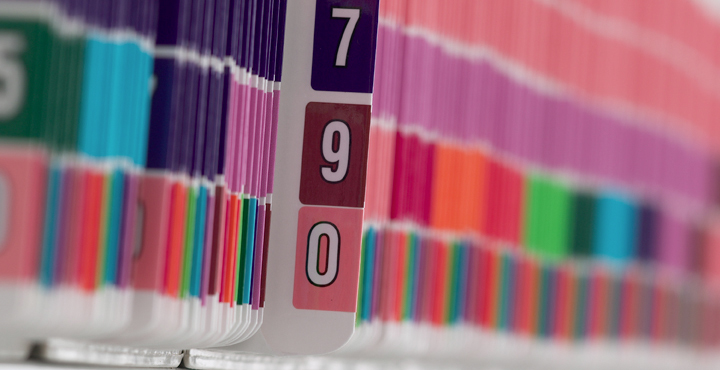
Color-coding (Part 4): Preventing privacy and security issues
In a four-part blog series, we are focusing on color-coding. For part one we discussed the color-coded file folder, part two we looked beyond the obvious and immediate benefits and in part three we highlighted the benefits of adding a splash of color for retention and disposition.
In our final post, we show how color-coding can be used to help organizations limit unwanted access to files and preserve the privacy and confidentiality of sensitive records.
Three privacy issues you can prevent with color-coding
To illustrate the privacy benefits, we’ll consider three potential issues: malicious file access, unneeded sharing of sensitive information and breaches of anonymity.
|
1.0 Malicious file access
Keeping records out of the wrong hands requires multiple security measures. Color-coding does its part by making it much more difficult for unauthorized parties to locate sensitive information. In traditional filing systems, files are often labeled and stored based on the name of the person or company. For potential information thieves, this makes them easy to scan and locate.
A better alternative is a numerical indexing system supported by color-coded labels. In this case, the organization provides authorized staff with the “master index” of numbers and their corresponding names. Without this index, thieves won’t be able to tell which file belongs to which person or company.
2.0 Unneeded sharing of information
In our second post in the series, we talked about how color-coding prevents misfiles and the consequent loss of productivity When an individual’s personal information ends up in someone else’s file, or their file ends up in the wrong location, there is an increased likelihood that staff will access and view that information in error.
In these cases, the staff will have to pore through multiple files in order to locate the missing item. This unnecessary access is a compliance risk and leads to a greater the risk they may disclose it illegally. By preventing misfiles, color-coding keeps this unneeded access to a minimum.
3.0 Anonymity breaches
Forget about the contents of the file – the mere fact that a file exists can pose a privacy and confidentiality issue. Consider the case of a health clinic, by labeling files with patient names, it exposes client identities to your entire staff and possibly even to visitors in your waiting room. Depending on the type of clinic, you could be exposing details about a patient’s diagnosis or treatment without opening the file.
Other examples of this issue include legal files or those relating to business deals such as mergers and acquisitions. The simple presence of a name on a file can reveal details about a particular court case or upcoming deal. This can all be avoided by using a numerical indexing system supported by color-coding.
As we have seen with this four-part series, color-coding is a relatively straightforward fix, but the benefits extend further than initially thought and address some of the most challenging issues facing organizations today. Not bad for a bit of color!





